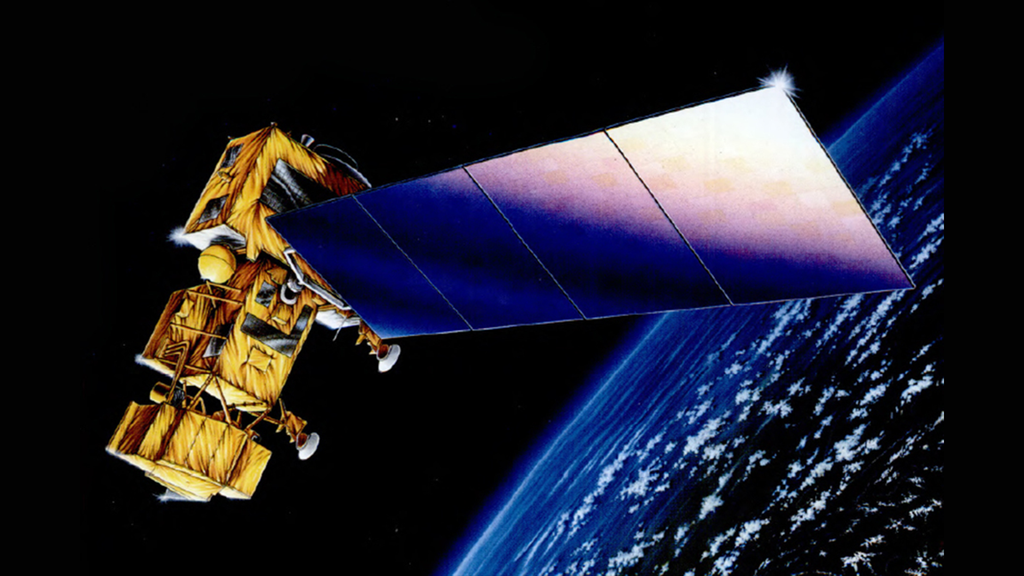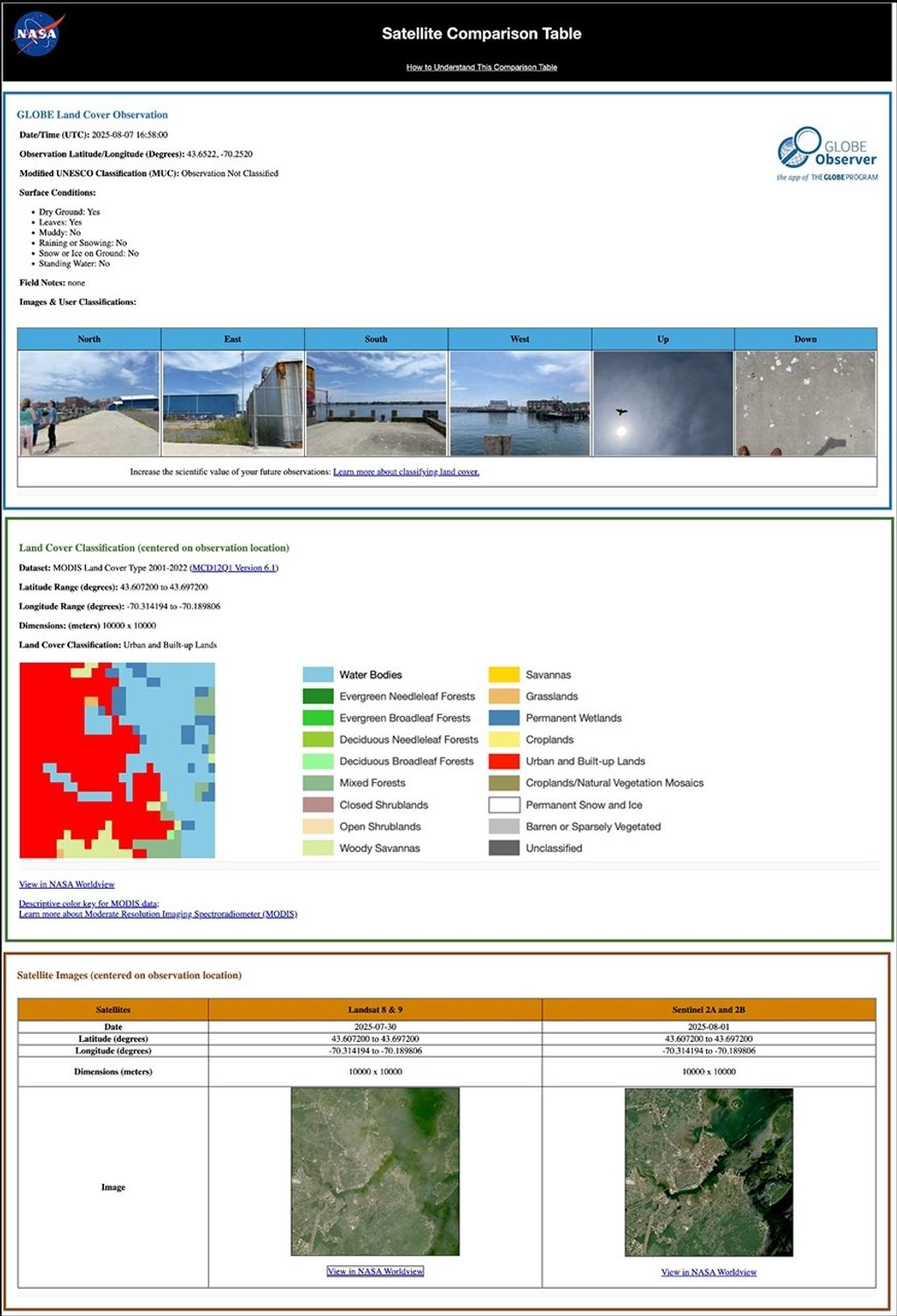1 min read
Sombrero Galaxy (MIRI Compass Image)
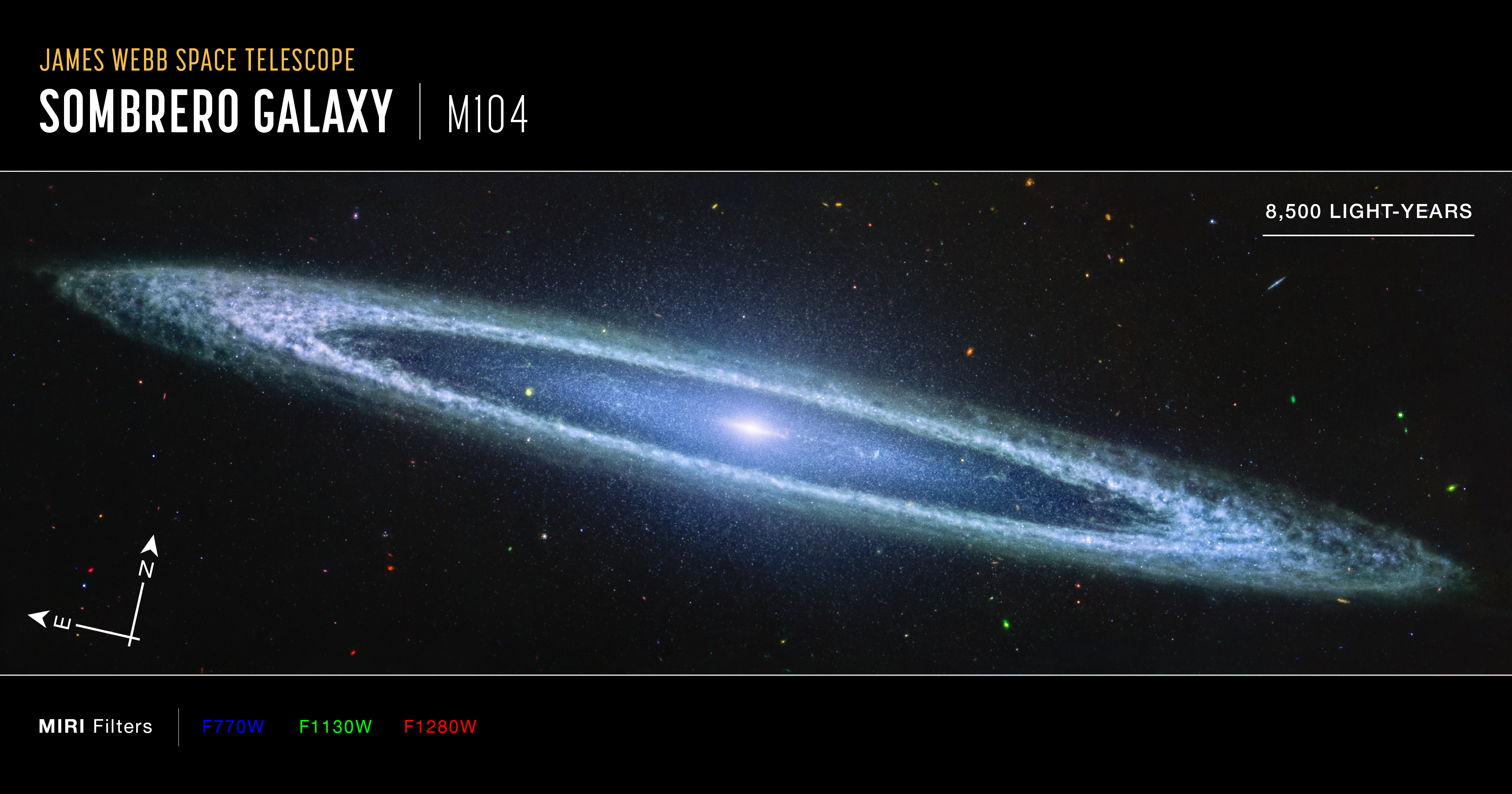
This image of the Sombrero Galaxy, captured by the James Webb Space Telescope’s MIRI (Mid-Infrared Camera) instrument, is presented with compass arrows, a scale bar, and a color key for reference.
This image shows mid-infrared wavelengths of light that have been translated into visible-light colors. The color key shows which filters were used when collecting the light. The color of each filter name is the visible light color used to represent the infrared light that passes through that filter.
The north and east compass arrows show the orientation of the image on the sky.
About the Object
- R.A. PositionR.A. PositionRight ascension – analogous to longitude – is one component of an object's position.12:39:59.42
- Dec. PositionDec. PositionDeclination – analogous to latitude – is one component of an object's position.-11:37:23.0
- ConstellationConstellationOne of 88 recognized regions of the celestial sphere in which the object appears.Virgo
- DistanceDistanceThe physical distance from Earth to the astronomical object. Distances within our solar system are usually measured in Astronomical Units (AU). Distances between stars are usually measured in light-years. Interstellar distances can also be measured in parsecs.About 29 million light-years away
- DimensionsDimensionsThe physical size of the object or the apparent angle it subtends on the sky.Image is about 7.2 arcminutes across (60,000 light-years)
About the Data
- Data DescriptionData DescriptionProposal: A description of the observations, their scientific justification, and the links to the data available in the science archive.
Science Team: The astronomers who planned the observations and analyzed the data. "PI" refers to the Principal Investigator.This image was created with Webb data from proposal: 6565 (M. Garcia Marin). Image processing: Alyssa Pagan (STScI).
- InstrumentInstrumentThe science instrument used to produce the data.MIRI
- Exposure DatesExposure DatesThe date(s) that the telescope made its observations and the total exposure time.7 June 2024
- FiltersFiltersThe camera filters that were used in the science observations.F770W, F1130W, F1280W
- Object NameObject NameA name or catalog number that astronomers use to identify an astronomical object.Sombrero Galaxy, M104
- Object DescriptionObject DescriptionThe type of astronomical object.Edge-on lenticular galaxy
- Release DateNovember 25, 2024
- Science ReleaseHats Off to NASA’s Webb: Sombrero Galaxy Dazzles in New Image
- CreditImage: NASA, ESA, CSA, STScI

These images are a composite of separate exposures acquired by the James Webb Space Telescope using the MIRI instrument. Several filters were used to sample wide wavelength ranges. The color results from assigning different hues (colors) to each monochromatic (grayscale) image associated with an individual filter. In this case, the assigned colors are: Blue: F770W, Green: F1130W, Red: F1280W
Related Images & Videos

Sombrero Galaxy (MIRI Image)
NASA’s James Webb Space Telescope recently imaged the Sombrero Galaxy with its MIRI (Mid-Infrared Instrument), resolving the clumpy nature of the dust along the galaxy’s outer ring. The mid-infrared light highlights the gas and dust that are part of star formation taking place...
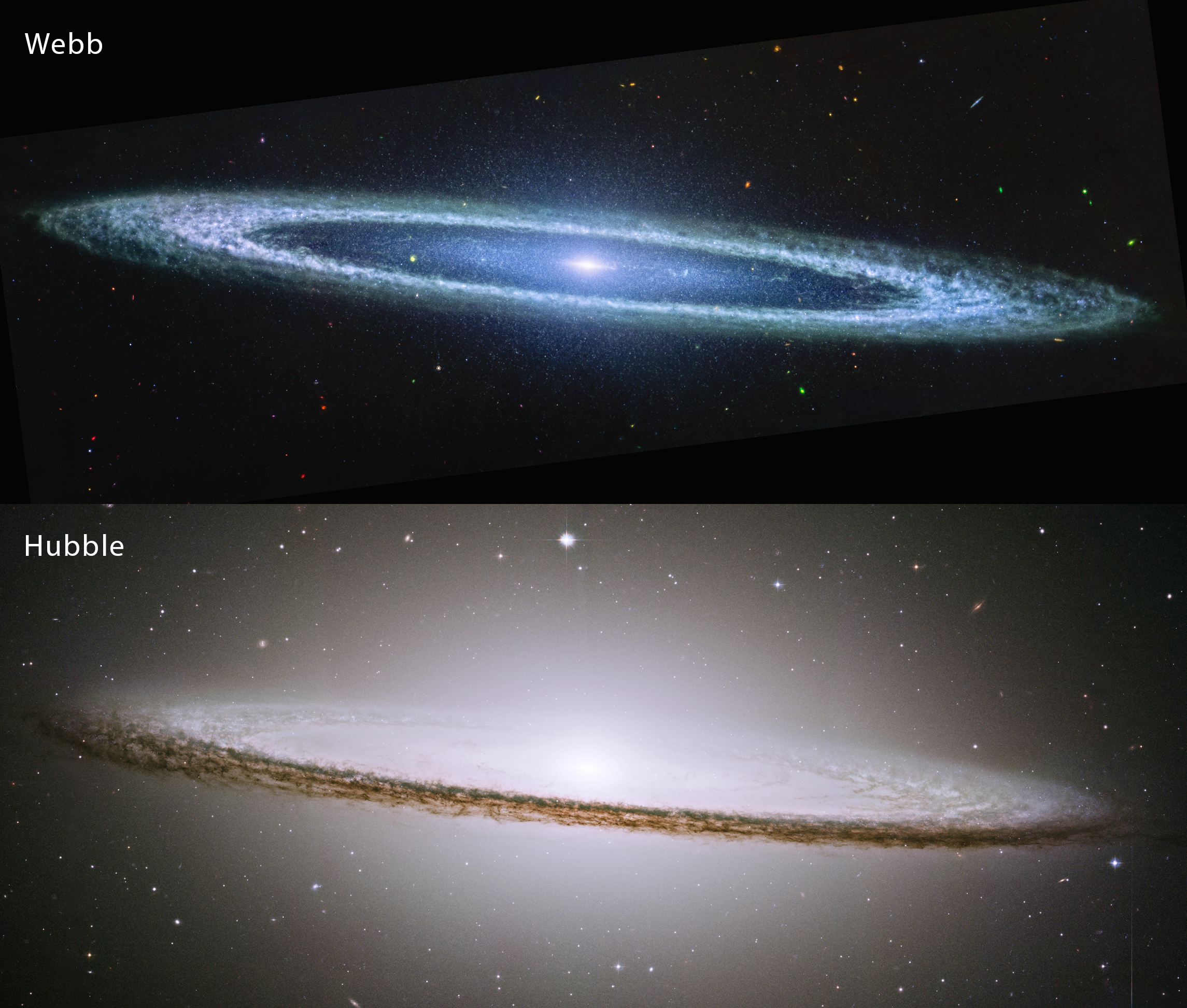
Sombrero Galaxy (Hubble and Webb Image)
This image compares the view of the famous Sombrero Galaxy in mid-infrared light (top) and visible light (bottom). The James Webb Space Telescope’s MIRI (Mid-Infrared Instrument) reveals the smooth inner disk of the galaxy, while the Hubble Space Telescope’s visible-light image...
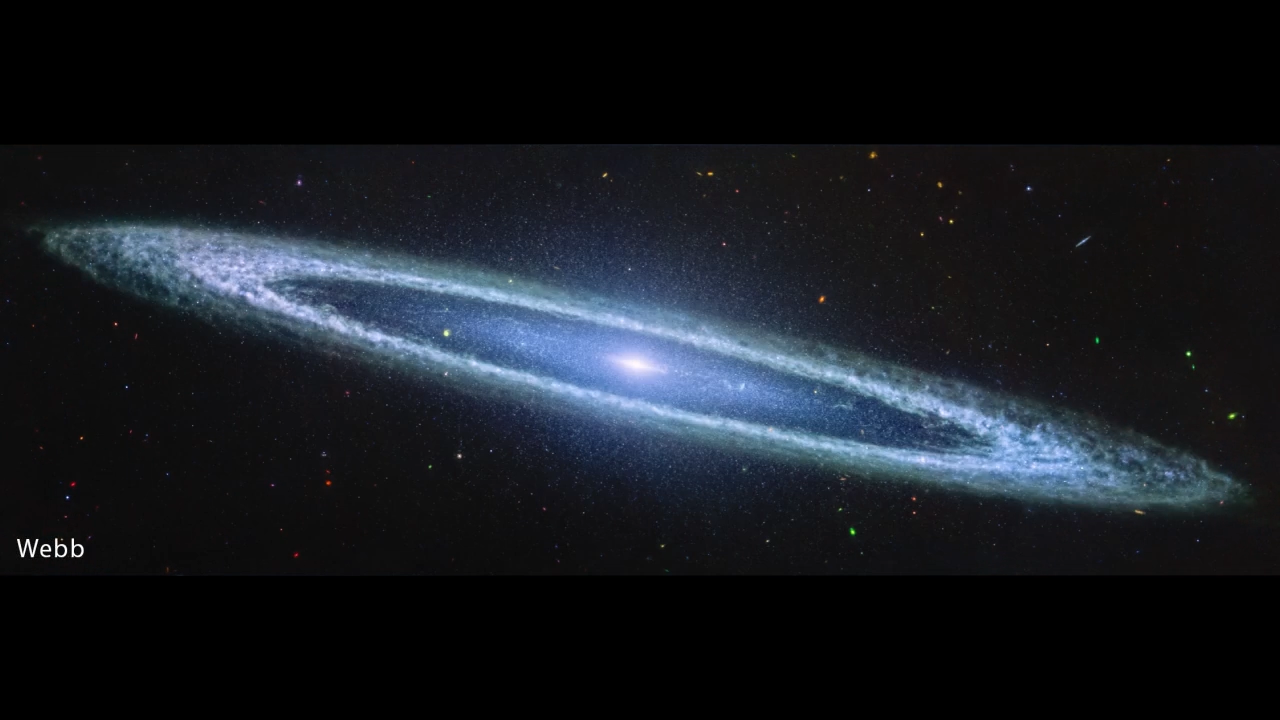
Sombrero Galaxy Fade (Spitzer, Webb, Hubble)
This video compares images of the Sombrero Galaxy, also known as Messier 104 (M104). The first image is in infrared light, and was captured by the Spitzer Space Telescope. The second image shows the Webb Space Telescope’s mid-infrared look at the galaxy using the MIRI...
Share
Details
Laura Betz
NASA’s Goddard Space Flight Center
Greenbelt, Maryland
laura.e.betz@nasa.gov
NASA, ESA, CSA, STScI









